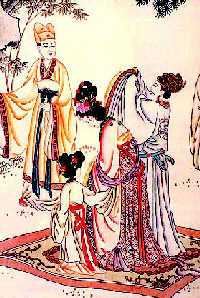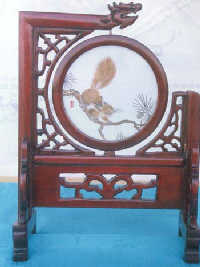 Hailed as a "unique skill of the world", hair embroidery is one of the gems ofChinese embroideryart, together with Su embroidery, Xiang embroidery, Yue embroidery and Shu embroidery. As the name indicates, hair embroidery refers to embroidery where human hair is used as a thread instead of other materials. Since Chinese people generally have black hair, embroidery is also called "Moxiu" (black embroidery).
Hailed as a "unique skill of the world", hair embroidery is one of the gems ofChinese embroideryart, together with Su embroidery, Xiang embroidery, Yue embroidery and Shu embroidery. As the name indicates, hair embroidery refers to embroidery where human hair is used as a thread instead of other materials. Since Chinese people generally have black hair, embroidery is also called "Moxiu" (black embroidery).
 History
History
The origin of hair embroidery can be traced back to theTang Dynasty(618-907), when girls cut their long hair and used it to weave the image of Buddha to show their piety. However, this skill declined during the Ming and Qing dynasties (1368-1911). In the 1970s, the ancient skill was revived and has since been explored and studied in detail. Today, the art has by far surpassed its past attainments in color and variety. The color is no longer limited to black. Others, such as blonde, amber, auburn, white and grey of various shades are also used, totaling dozens of tones mostly collected from ethnic-minority areas. Occasionally, to give the lips of an ancient beauty their usual rosiness, white hair may be dyed red. But, on the whole, works embroidered with hair retain their natural hues.
by far surpassed its past attainments in color and variety. The color is no longer limited to black. Others, such as blonde, amber, auburn, white and grey of various shades are also used, totaling dozens of tones mostly collected from ethnic-minority areas. Occasionally, to give the lips of an ancient beauty their usual rosiness, white hair may be dyed red. But, on the whole, works embroidered with hair retain their natural hues.
 Process
Process
To produce hair embroidery, three steps must be taken. First, the long hair of a young girl is collected, washed and dyed different colors using chemical treatments. Finally, the colored hair is used as thread to embroider a woven textile. The cloth may be dyed or undyed linen, cotton, wool, or luxurious silk.
